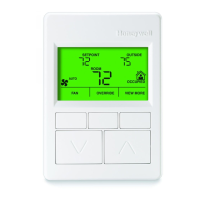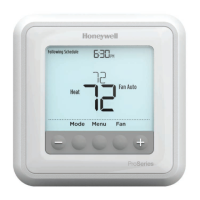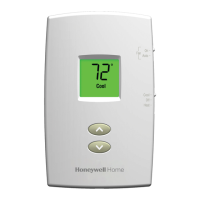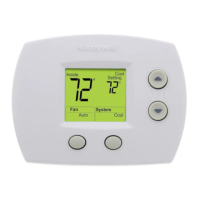Appendix
8
9. Appendix
9.1. Help with problems
Problem Cause Remedy
Batteries
inserted
incorrectly
► Insert the batteries
correctly.
Teach-in failed
Radio
connection
failure
► Eliminate interference
sources (metal, wireless
devices).
► Correct installation site.
► Repeat the teach-in.
HC60NG does
not react to set
point changes
on HCW 80
HC60NG
and HCW
80 not
bound
► Reset HC60NG.
► Follow the teach-in
procedure as described
in section “3.3”.
Teach-in
procedure
incorrect/
incomplete
► Repeat the teach-in.
After teach-in
red LED is on
and green LED
is flashing once
every 3 sec
Position of
HCW 80
incorrect
► Repeat the teach-in
keeping approx. 1 m
distance between HCW
80 and
HC60NG.
Communi-
cation loss
RF signal
blocked
► Relocate the HCW 80
(see section “3.2”).
Red LED of the
HC60NG is on
Batteries of
HCW 80
exhausted
► Replace batteries in
HCW 80
(see section “8”).
9.2. Technical data
Batteries 1.5 V, type LR06, AA
Frequency 868.3 MHz (transmitter)
Operating temperature 0 °C to 50 °C
Storage temperature –20 °C to 70 °C
Humidity 5 % to 90 % relative humidity
9.3. Device and function definition in
accordance with EN 60730-1
• Purpose of the device is temperature controlling
• Device fulfils Protection class 1, EN 60730-1
• Independently installable electronic control system
with fixed installation
• Type of action is Type 1.8
• Temperature of ball thrust hardness test for
housing components 75 °C and for live parts such
as, for example, terminals 125 °C
• EMC emitted interference test at 230 V∼, 50 HZ
maximum
• Pollution severity is 2
• Rated voltage is 4000 V (corresponding to
Overvoltage category III)
• Software class is A
9.4. WEEE directive 2002/96/EC – Waste
Electrical and Electronic Equipment
directive
► At the end of the product life dispose of
the packaging and product in a
corresponding recycling centre.
► Do not dispose of the unit with the usual
domestic refuse.
► Do not burn the product.

